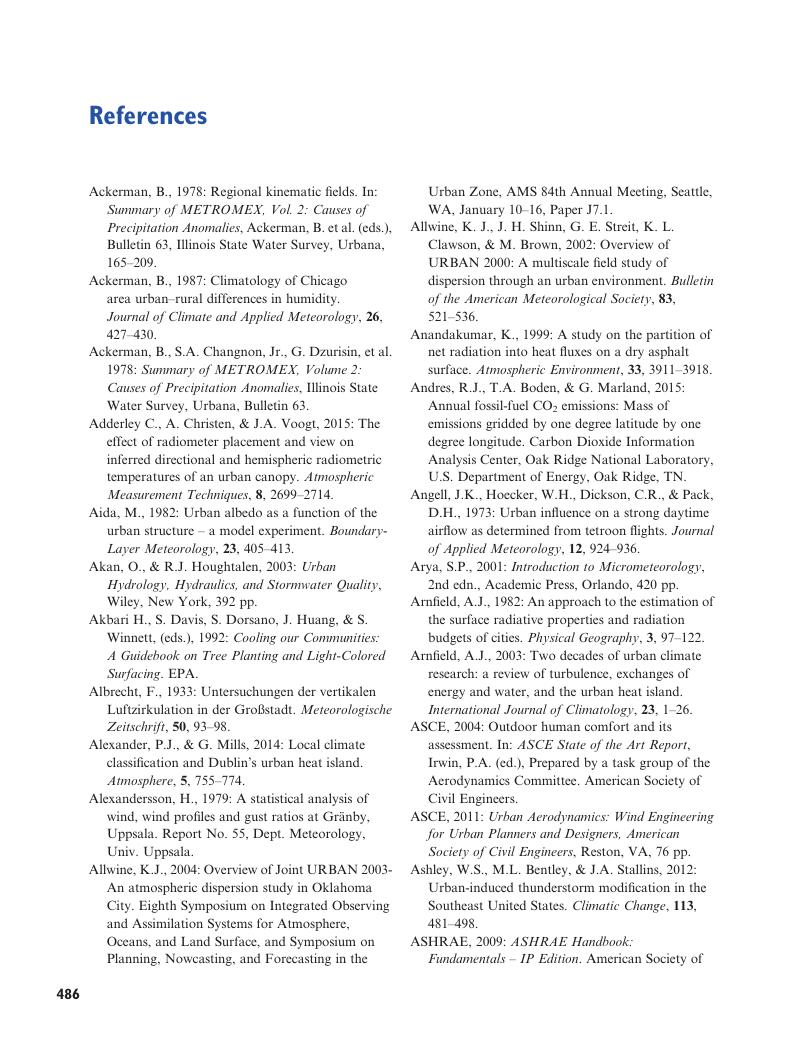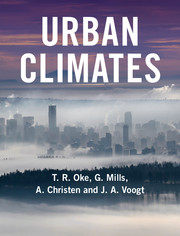Book contents
- Urban Climates
- Reviews
- Urban Climates
- Copyright page
- Contents
- Symbols and Units
- Preface
- Acknowledgements
- 1 Introduction
- 2 Concepts
- 3 Methods
- 4 Airflow
- 5 Radiation
- 6 Energy Balance
- 7 Urban Heat Island
- 8 Water
- 9 Atmospheric Moisture
- 10 Clouds and Precipitation
- 11 Air Pollution
- 12 Geographical Controls
- 13 Cities and Global Climate Change
- 14 Climates of Humans
- 15 Climate-Sensitive Design
- Epilogue
- Book part
- References
- Subject Index
- Geographical Index
- References
References
Published online by Cambridge University Press: 16 September 2017
- Urban Climates
- Reviews
- Urban Climates
- Copyright page
- Contents
- Symbols and Units
- Preface
- Acknowledgements
- 1 Introduction
- 2 Concepts
- 3 Methods
- 4 Airflow
- 5 Radiation
- 6 Energy Balance
- 7 Urban Heat Island
- 8 Water
- 9 Atmospheric Moisture
- 10 Clouds and Precipitation
- 11 Air Pollution
- 12 Geographical Controls
- 13 Cities and Global Climate Change
- 14 Climates of Humans
- 15 Climate-Sensitive Design
- Epilogue
- Book part
- References
- Subject Index
- Geographical Index
- References
Summary

- Type
- Chapter
- Information
- Urban Climates , pp. 486 - 509Publisher: Cambridge University PressPrint publication year: 2017
References
- 1
- Cited by

